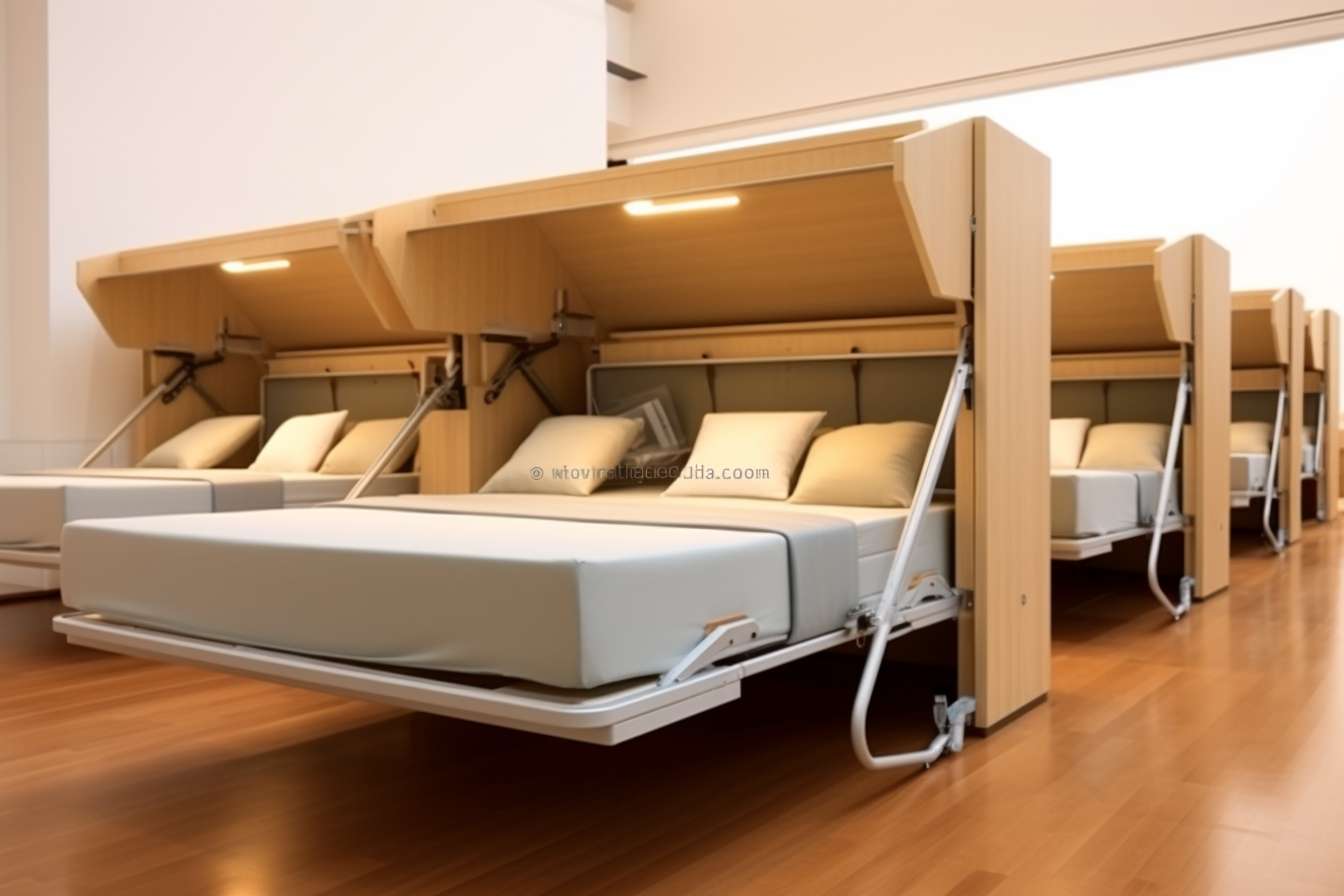Folding Beds: A Practical Guide to Styles, Costs, and Key Features
When space comes at a premium in modern living situations, versatile furniture solutions become essential. Folding beds offer the perfect balance between functionality and space efficiency, providing a comfortable sleeping surface that can be tucked away when not in use. Whether you're furnishing a guest room, studio apartment, or simply need an extra bed for occasional visitors, understanding the options available can help you make an informed decision that suits both your space constraints and comfort requirements.

What Are Folding Beds and How Do They Work?
Folding beds are designed with space-saving functionality in mind, featuring mechanisms that allow them to collapse into a more compact form when not in use. The most common design involves a metal or wooden frame with a mattress that folds in half or thirds. The folding mechanism typically utilizes hinges at strategic points, allowing the bed to collapse into a smaller footprint for storage.
Most folding beds feature locking mechanisms that secure the bed in both its extended and folded positions. When unfolded, support legs extend to provide stability similar to a conventional bed. The innovation lies in the engineering that allows these beds to transform from full-sized sleeping surfaces to compact units that can be stored in closets, under other beds, or stood upright against walls when not needed.
Different Types of Folding Beds
The market offers several distinct styles of folding beds, each with its own advantages depending on your specific needs:
-
Rollaway Beds: These feature wheels for easy mobility and typically fold in half horizontally. The mattress folds with the frame and can be quickly deployed for unexpected overnight guests.
-
Cabinet Beds: Also known as murphy cabinet beds, these fold into what resembles a storage chest or cabinet when not in use. They provide a more decorative option that can double as a console table or storage unit.
-
Ottoman Beds: These ingeniously fold into what appears to be an ottoman or footstool, making them perfect for living rooms where they serve dual purposes.
-
Chair Beds: Designed to unfold from what appears to be an armchair or sofa into a sleeping surface, these are ideal for studio apartments where every piece of furniture must serve multiple functions.
-
Cot-Style Folding Beds: Featuring a simple X-frame design, these lightweight options fold flat and are often used for camping or as temporary guest solutions.
Why a Folding Bed Might Be Worth Considering
Folding beds offer several advantages that make them attractive options for many households. The primary benefit is space efficiency – they allow rooms to serve multiple purposes without compromising on comfort. A home office can transform into a guest room in minutes, or a living room can accommodate overnight visitors without requiring a dedicated guest bedroom.
Flexibility is another significant advantage. Many modern households need adaptable living arrangements, whether for accommodating visiting relatives, children returning from college, or enabling downsizing without sacrificing the ability to host guests. Folding beds provide this flexibility without requiring permanent dedication of valuable square footage.
Cost-effectiveness also makes folding beds appealing. Compared to traditional beds or sleeper sofas, quality folding beds often represent a more economical solution while still providing proper support for occasional use. Additionally, they’re typically easier to move during relocations or room reconfigurations, making them practical investments for renters or those who anticipate lifestyle changes.
Key Things to Check Before You Buy
Before purchasing a folding bed, several important factors deserve consideration to ensure you select the right option:
Weight Capacity: Check the manufacturer’s specifications for maximum weight support. Quality folding beds should clearly state their weight capacity, typically ranging from 250 to 400 pounds.
Mattress Quality: The mattress is crucial for comfort. Look for options with memory foam or innerspring construction rather than basic foam. The ideal thickness for adequate support is 4-6 inches for occasional use, with higher-end models featuring mattresses up to 8 inches thick.
Frame Construction: Examine the frame material and construction. Steel frames offer durability, while aluminum provides lightweight portability. Reinforced joints and quality locking mechanisms contribute to stability and safety.
Ease of Operation: Test how easily the bed folds and unfolds. A well-designed folding bed should allow a single person to operate it without strain, with smooth mechanisms that don’t require excessive force.
Storage Dimensions: Measure your available storage space and compare it with the folded dimensions of the bed. Consider both height and width when folded, as well as whether the bed stands vertically or lies flat when stored.
Warranty Coverage: Quality folding beds should come with warranty protection, typically ranging from 1-5 years. This reflects the manufacturer’s confidence in both the frame and mattress durability.
Typical Price Ranges
Folding beds vary significantly in price depending on their design, quality of materials, and additional features. Understanding the general price categories can help you budget appropriately and identify good value.
| Type of Folding Bed | Price Range | Key Features |
|---|---|---|
| Basic Cot-Style | $70-150 | Simple metal frame, thin mattress, basic durability |
| Standard Rollaway | $150-300 | Steel frame, 4-5” mattress, wheels for mobility |
| Premium Rollaway | $300-500 | Reinforced frame, memory foam mattress, extended warranty |
| Ottoman/Chair Beds | $200-600 | Decorative upholstery, dual functionality, compact design |
| Cabinet Beds | $500-1,500+ | Furniture-quality materials, hidden storage, premium mattress |
Prices, rates, or cost estimates mentioned in this article are based on the latest available information but may change over time. Independent research is advised before making financial decisions.
Higher-priced options generally feature better-quality mattresses, sturdier frames, and additional features like built-in storage or decorative elements that allow them to blend with home decor. While basic models provide functional solutions for occasional use, investing in mid-range options often provides better value through improved durability and comfort for regular guests.
Conclusion
Folding beds represent a practical solution to the challenge of creating flexible sleeping arrangements in limited spaces. By understanding the various types available, evaluating your specific needs, and knowing what features to prioritize, you can select a model that provides both comfort for your guests and convenience for your lifestyle. Whether you opt for a simple cot-style bed for rare occasions or invest in a furniture-quality cabinet bed for regular use, the right folding bed can significantly enhance your home’s functionality without compromising on valuable space.




